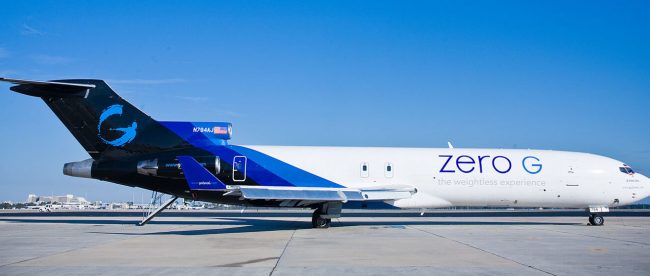AstroAccess Is Working Towards Making Spaceflights Accessible For Disabled People
Thanks to companies like SpaceX and Blue Origin, space travel is becoming more of a reality for regular citizens of our beautiful planet. As companies and space agencies start providing these rides in the future, it is imperative that we make considerations for and provide the right accommodations to disabled people.
AstroAccess is a not for profit organization that is working towards advancing disability inclusion in space exploration. Recently, they launched a parabolic flight – a flight that flies within earth’s atmosphere and simulates zero gravity in repeated short bursts of 20-30 seconds – comprising of a dozen disabled scientists, veterans, engineers, and artists who got a chance to not only experience weightlessness but also discovered how their body acts in space. Eric Ingram, a 31 year old chief executive of SCOTY Inc. who is a wheelchair user, found that it was much easier to move around in simulated zero gravity. Not only that, he was also able to stand up for the first time in his life. Another passenger, 27 year old Sawyer Rosenstein, who is paralyzed from waist down could bend his knees and maneuver his legs wearing a special flight suit with a strap. He also found more flexibility in his full range of motion and the chronic pain he typically experiences on earth disappeared during the flight! Both Eric and Sawyer thought that space travel could have therapeutic applications in the future.
In addition to modified spacesuits for people with mobility impairments, the flight also tested special lighting systems for deaf passengers and Braille and other navigational devices for blind passengers. Mona Minkara, a 33 year old blind bioengineer blind, navigated the plane in simulated zero gravity using ultrasonic and haptic devices which signaled her as she approached the walls or other objects. Having said that, the most helpful device for her was just an extendable cane.
AstroAccess and the participants in this flight are helping pave the path for accessibility and inclusion in space travel by shedding light on accessibility issues that must be considered right now, as space travel is still in its infancy and retrofitting equipment later on will consume more time and money, not to mention these factors may actually discourage companies from considering accessibility in the future. Many of the participants love space and could have been astronauts, however, disabled people have been traditionally rejected for space travel by agencies like NASA. Initially, NASA only selected physically fit, able bodied white men to be astronauts. Even though more recently they have broadened their criteria, they still require people to meet certain requirements. Private space travel could possibly change that perception and rule in the future. The Federal Aviation Administration is prohibited from creating safety regulations for private spaceflights until October 2023, and organizations like AstroAccess are working towards guiding government agencies to modernize their requirements and give strong consideration to accessibility in future spaceflights.
Learn more about the twelve folks who were on this flight and keep an eye on AstroAccess to learn more about what they are doing to make accessibility a priority in spaceflights!
How do you feel about accessible space flights? Excited about it? Let us know in the comments below!



Source: Futurism, New York Times


Leave a comment